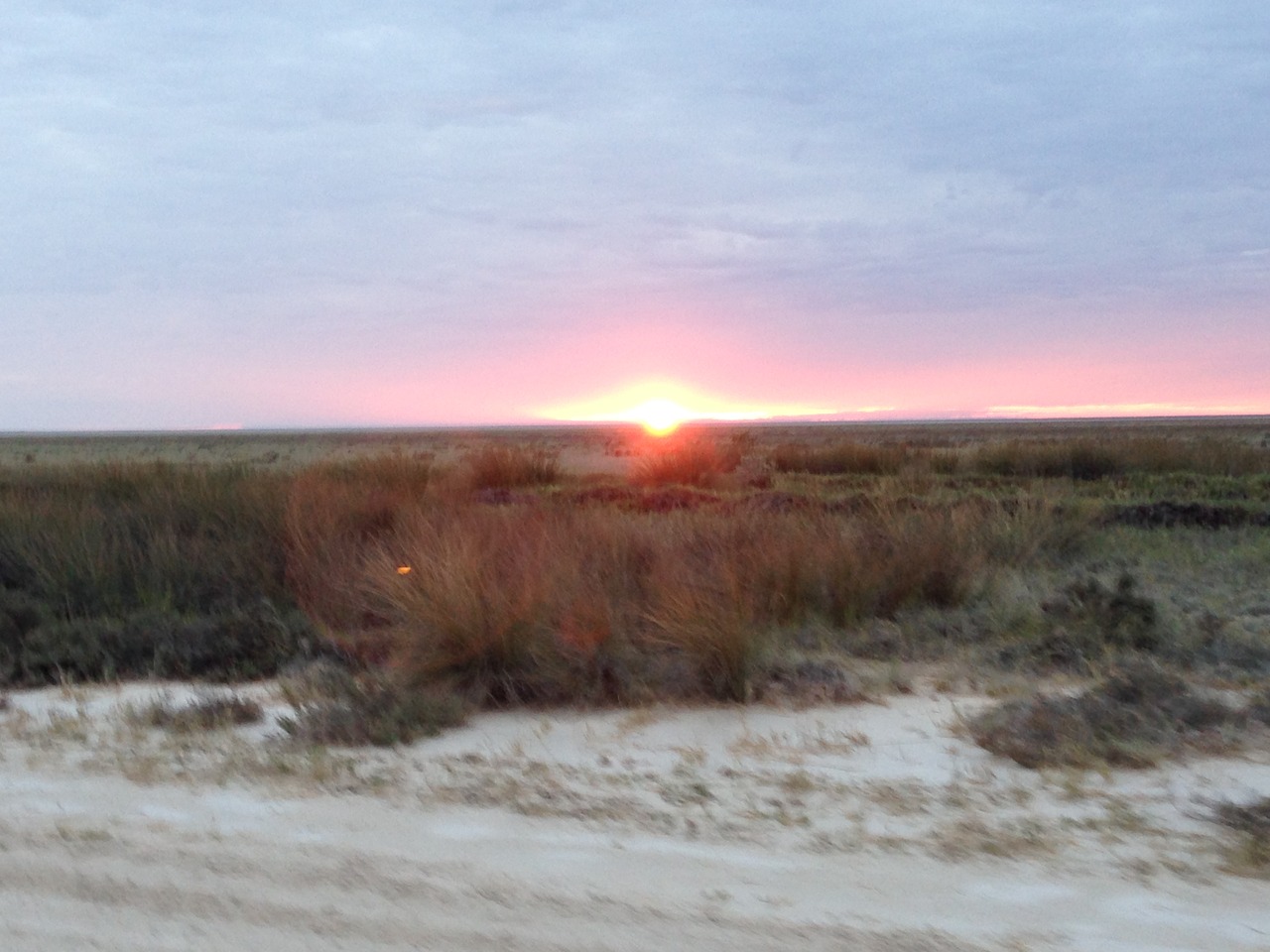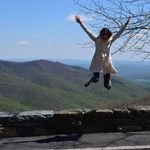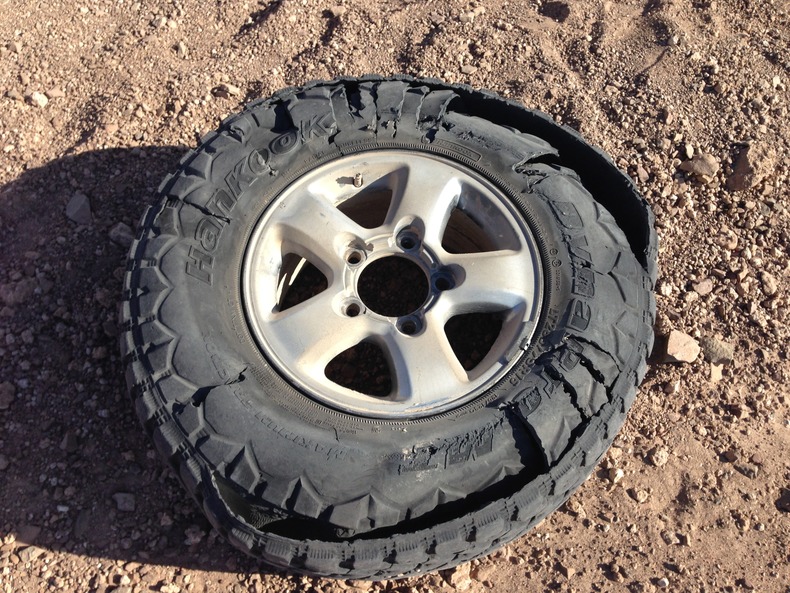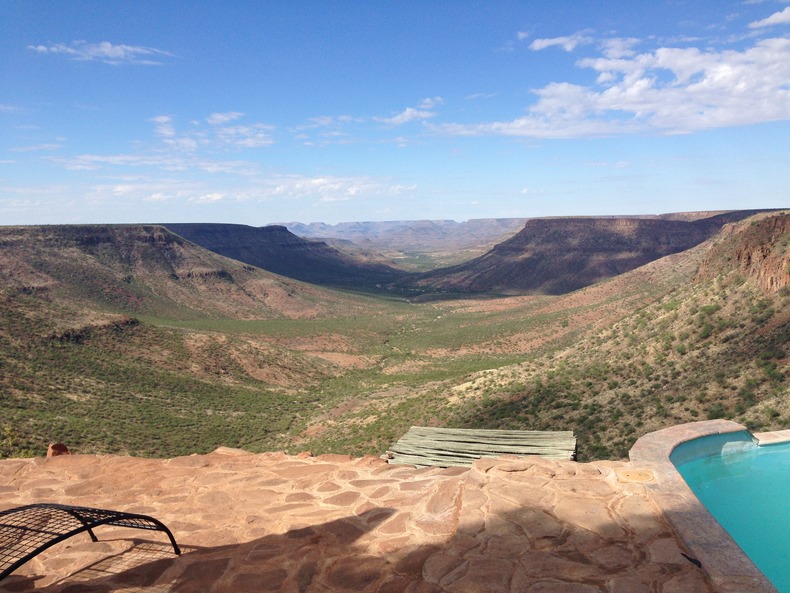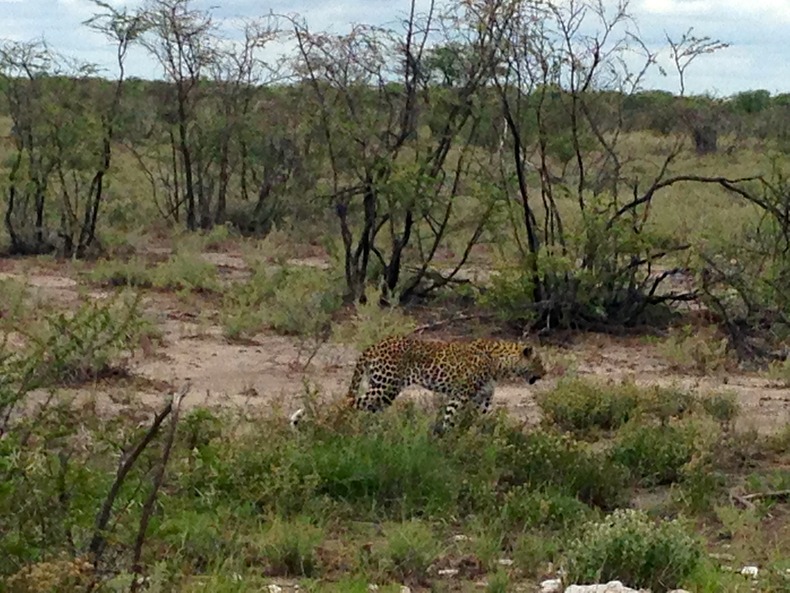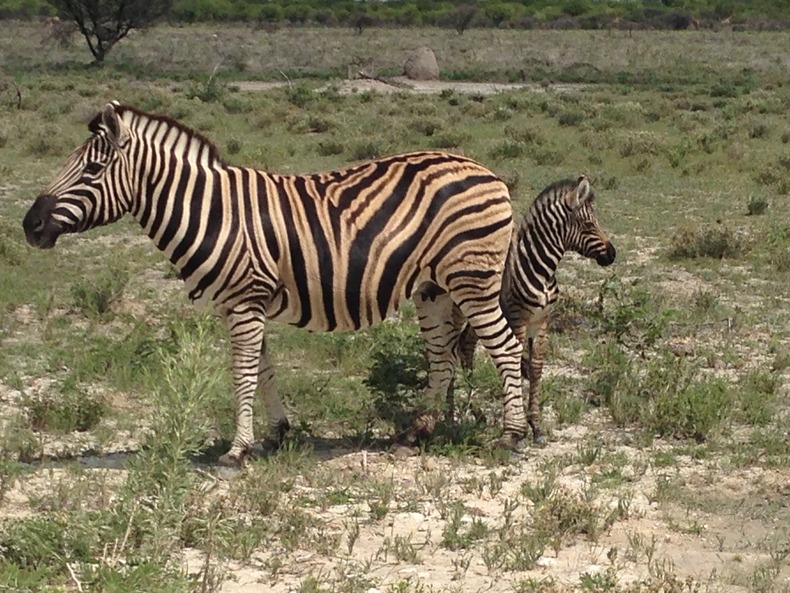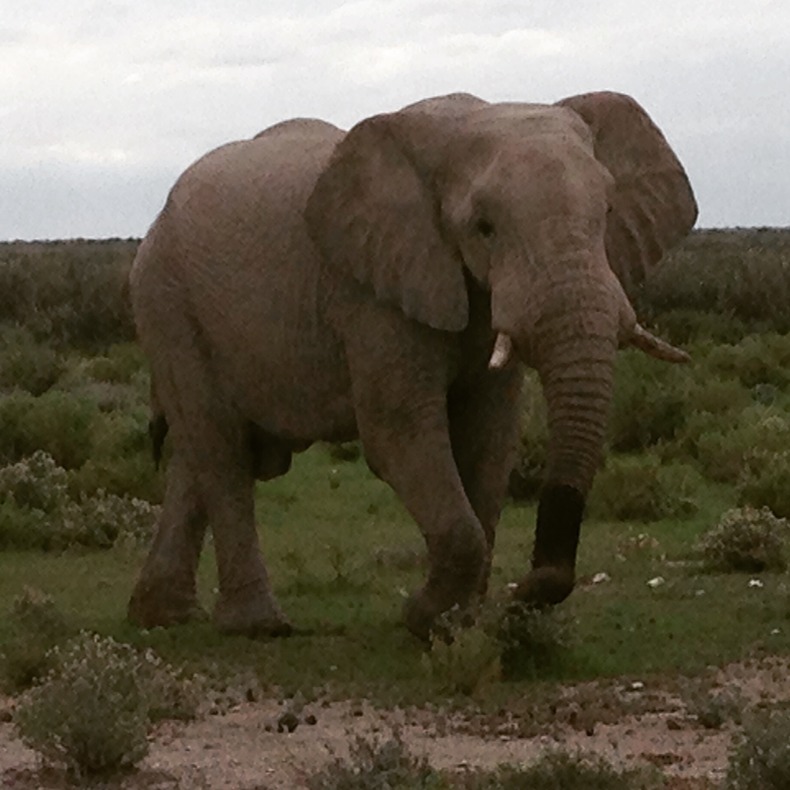Grootberg
After a flat tire situation, we arrived in Grootberg. I seriously do not know how our tire was so destroyed, especially since the car was still moving. This definitely illustrates how hard Namibia is on tires:
This was our flat tire. It is pretty much shredded into two pieces. You can't tell by the picture but this is a huge, thick 4x4 tire. The kind that seems indestructible...
The Grootberg lodge was more or less built on a mountain in the Kunene region between "Damaraland" and Etosha National Park. To get there, you drive through the mountains and then you must literally drive up the side of a mountain on a not-so-great "gravel" road. The lodge was one of the first community owned lodges in Namibia and was largely funded by the European Union. Hopefully in the future, more lodges in Namibia will be community owned. When this is the case, more of the income directly benefits locals. Additionally, this guarantees more decision-making over the structures and surrounding area and maintains a higher level of autonomy for the community.
The ≠Khoadi //Hoas Conservancy has been established around Grootberg, which includes 12,000 hectares of land. While there are desert elephants and lions, black rhinos and other rare animals roaming here, there were many more animals in this area before so many were killed. Antelope and zebra were over-hunted while "problem" animals such as elephants and predators were killed by farmers and others.
Overlooking the Klip River Valley and situated in complete isolation, Grootberg might be the most beautiful place in Namibia. Like so many places we visited, we were very sad to leave. Here are a few photos:

Photo credit Mr. Leedom
Beautiful Grootberg
Etosha
Etosha National Park is quite well known in the region and around the world for its incredible wildlife. The area that is now Etosha was first seen by Europeans in 1851. In 1876, an American trader, McKierman, visited Etosha and described the wonder therein:
"All the menageries in the world turned loose would not compare to the sight that I saw today."
The white colonists and settlers over-hunted the area which caused many animal populations to dwindle.
In the early 1900s (before Namibian independence), the German South-West African colonial government committed atrocious human rights violations including genocide and oppression while simultaneously making positive steps in terms in conservation. Recall that approximately 75,000 Herero and Nama persons were killed during the genocide between 1904-1908. Literally while the genocide was occurring, in 1907, the German Governor of South-West Africa established the Etosha area as a game reserve. While conservation efforts are of course commendable, it is sickening that while the ink was drying on a proclamation protecting animals, thousands of humans were still being placed in concentration camps, slaughtered, and driven into the desert to die from dehydration and starvation in accordance with an "annihilation order."
Etosha is huge!! The park is more than 22,000 square kilometers/8,000 square miles today, though at one time it was over 100,000 square kilometers. The park name comes from the Etosha salt pan, which covers about a fifth of the park's area and is approximately 75 miles long. Along these lines, Etosha means "Great White Place" in Oshivambo, the Ovambo language. The Hai//om, a San sub-group (recall that the San are hunter-gatherers and are quite marginalized in Namibia), refer to the pan as "Khubus" which means something along the lines of "bare white place with dust."Historically, the Hai//om lived in the now-Etosha area before they were ousted by others.
While in Etosha, we were fortunate to see two leopards in one day, though it is rare to see any. They are certainly the most elusive cat in Namibia and probably all of southern Africa. We saw one leopard hunting during the day while driving from one end of the park to the other. The second leopard we saw at night, jumping over a high fence into the camp and pretty much right over the security guard's head! Our guide told us that she likes to go into the camp to drink pool water. Parents, do not let your children wander around Etosha--even in the camp!! They are very easy prey.
Female leopard hunting during the day
We also saw six lions, several rhino, elephants, zebras, hyenas, wildebeest, and many antelope.
Momma and baby zebra
During our trip we saw all of the "Big Five" (lion, elephant, rhino, leopard, buffalo) except for the buffalo. We were also amused to find out that there is also an "Ugly Five"which includes the hyena, wildebeest, vulture, warthog and the marabou stork. I personally think warthogs are cute.
This elephant got quite close to our vehicle
Living in the world. Humanitarian. Advocate for health, human rights and equality. Documenting experiences and observations.
